Dogs are known to be man’s best friend, providing companionship, loyalty, and love. However, even the most well-behaved and trained dogs are prone to getting into fights with other dogs. These fights can be scary and dangerous, causing harm to both dogs and their owners.
As a responsible pet owner, knowing how to handle such situations and prevent future fights is important. Here, we will discuss the steps to successfully how to reintroducing dogs after a fight and ways to prevent them from happening again.
Understanding the causes of dog fights and implementing proper techniques can ensure a peaceful and harmonious relationship between your furry companions. Whether you have multiple dogs in the household or your dog has had an altercation with a neighbor’s dog. Additionally, we must discuss seeking professional help if needed and how we can prevent it.
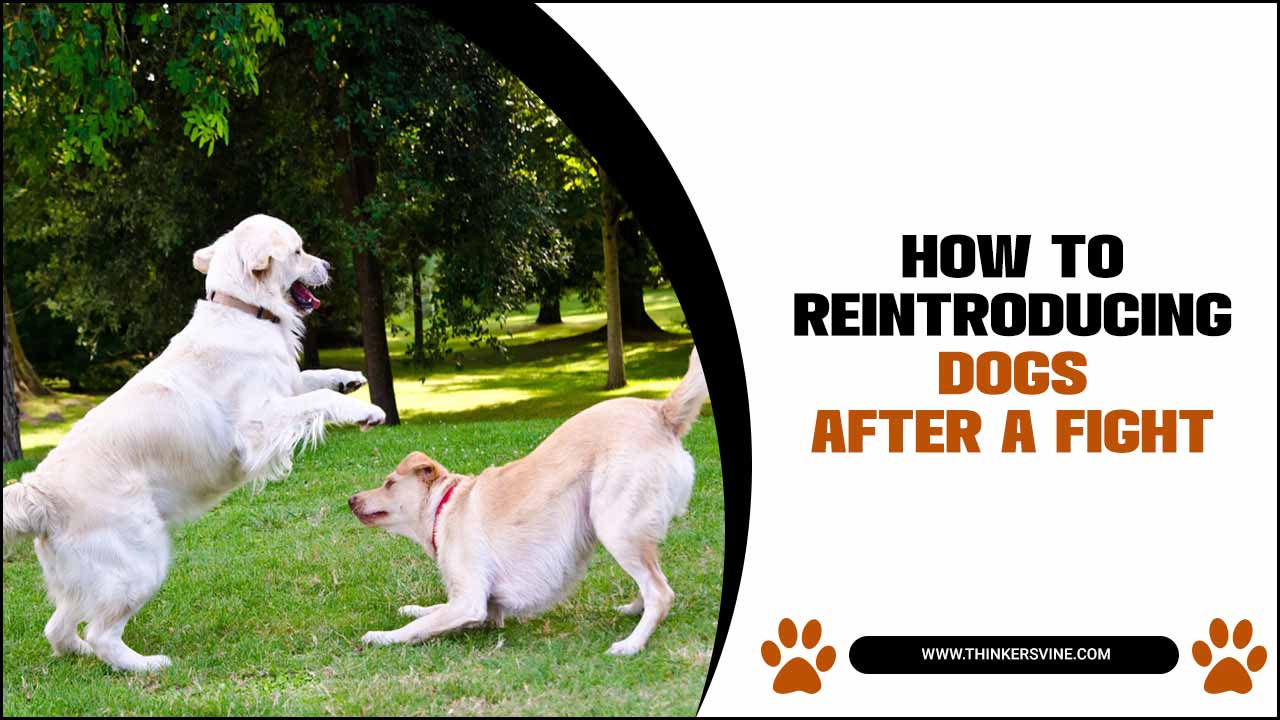
External Factors Affecting Dog Aggression
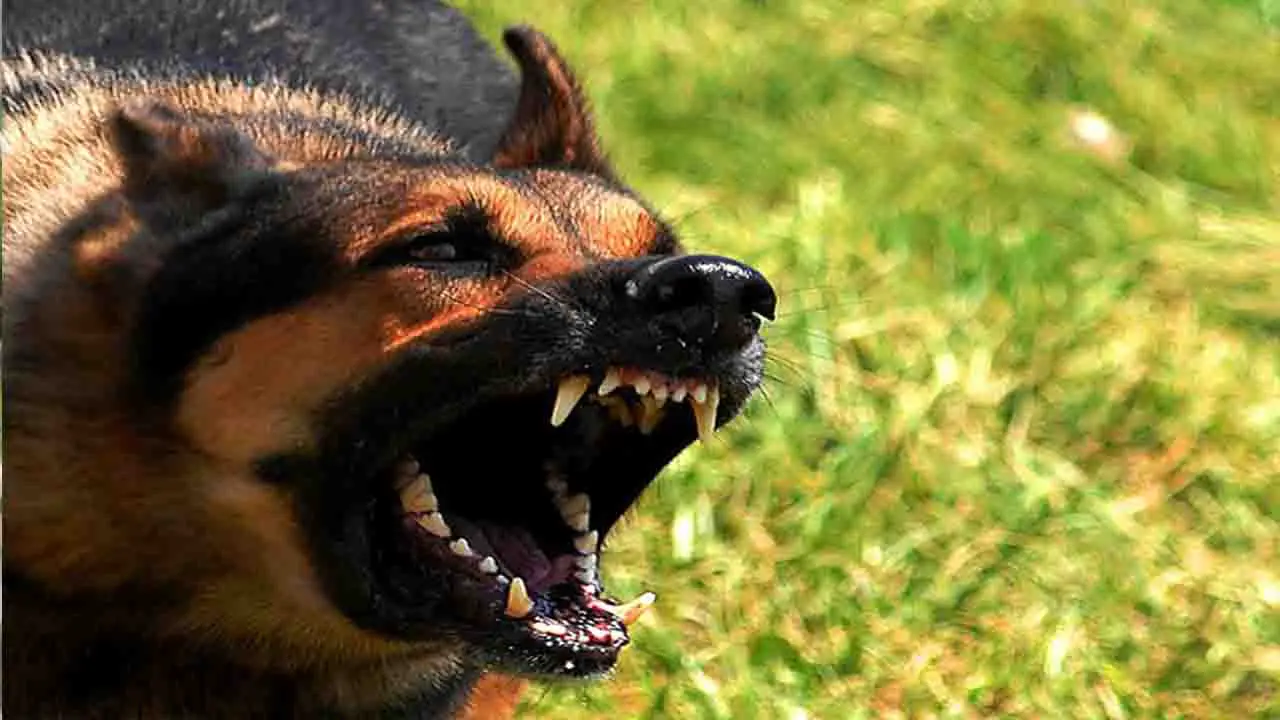
Dogs can become aggressive for various reasons, such as fear, territorial negative behaviors, or medical issues. It is essential to address these underlying causes to prevent future fights from occurring. All dogs are different. Some can be unfriendly, and others are friendly and welcoming. Some examples of these external factors affecting dog aggression include:
- The way they’re trained
- Their age
- Their environment
- What they see on the street or in other places, they go outside with their families or owners.
- Apprehension
- Insufficient proper socialization
- Inadequate Occupational Stimulation
- Psychological Problems
- Inability to Focus on Activities
- Personal Turf
How To Reintroducing Dogs After A Fight? – 8 Easy Steps
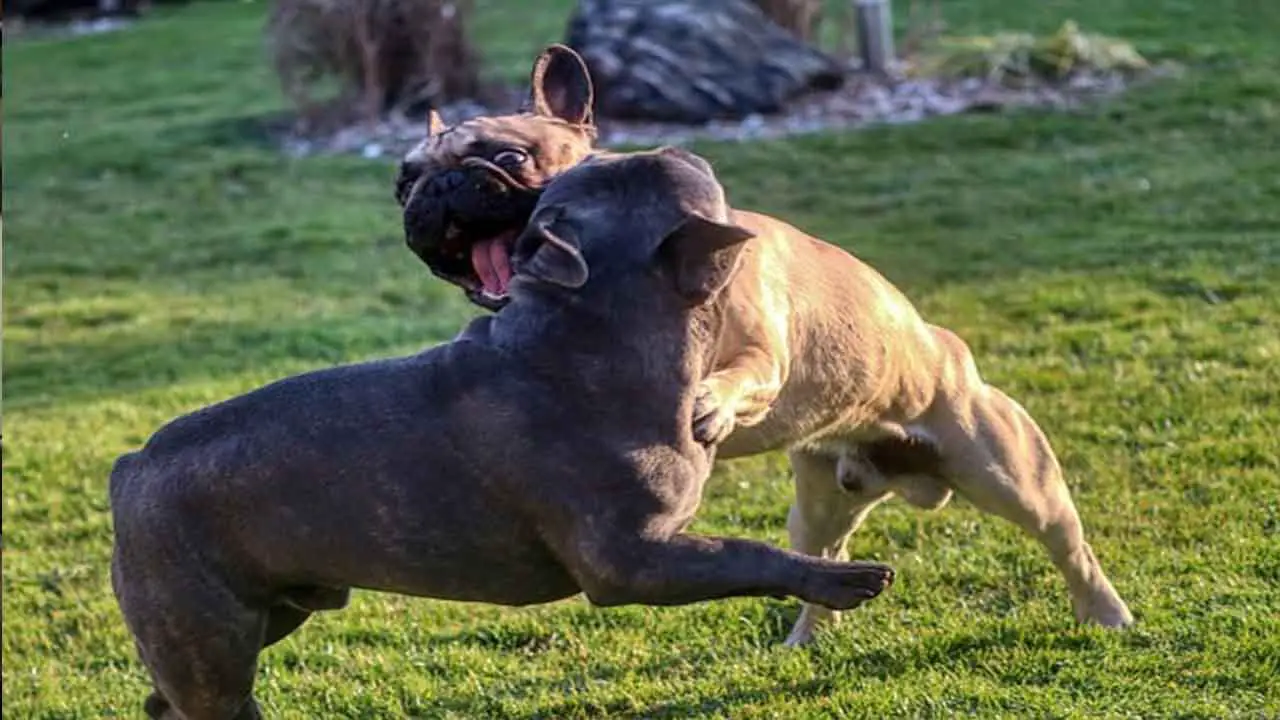
Reintroducing dogs after a fight can be a delicate process, but it is essential for the safety and well-being of both dogs. It is essential to closely monitor their behavior and body language and intervene if signs of aggression or tension arise. Here are the 8 steps on how to reintroduce dogs after a fight:
1. Separate The Dogs
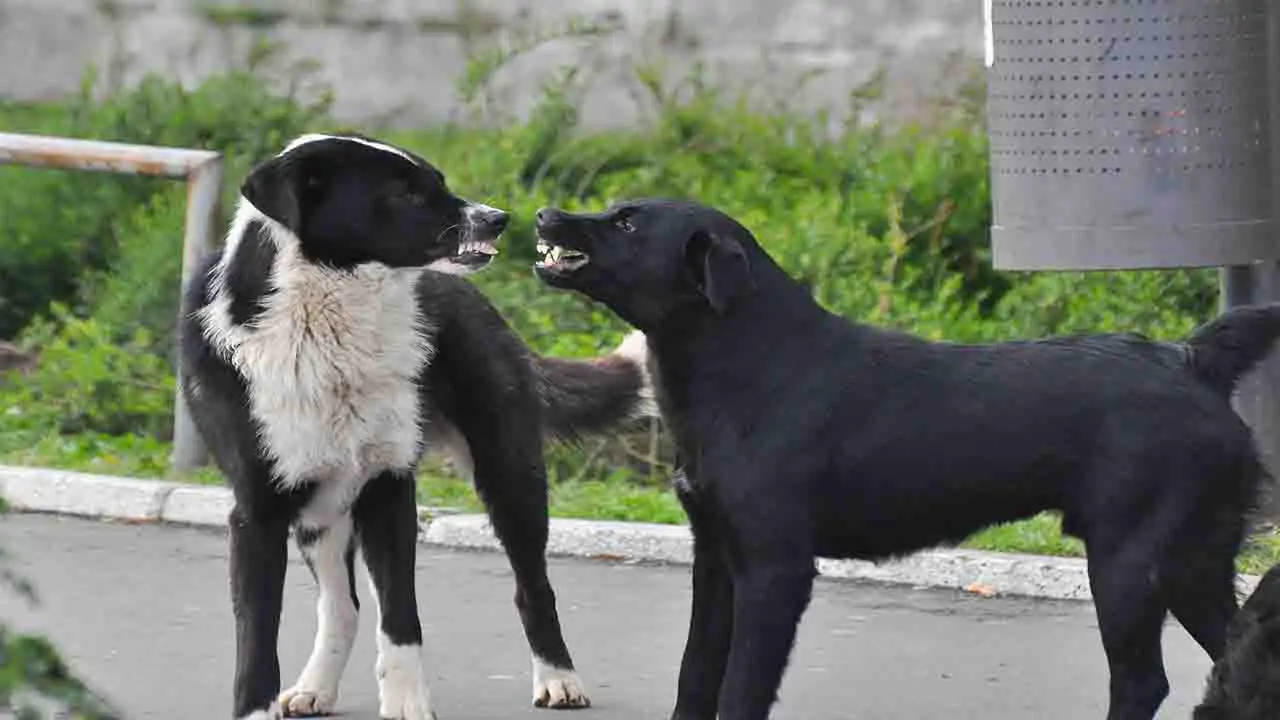
When dogs have been involved in a fight, it is crucial to separate them immediately to prevent any further harm or escalation. This can help ensure both dogs’ safety and allow them time to calm down and de-escalate. It is recommended to physically separate the dogs by using a leash or a barrier, keeping them in separate rooms if necessary.
It is important not to punish or scold the dogs during this time, as it can add to their stress and anxiety. Once the dogs have been separated, it is essential to seek guidance from a professional dog trainer or behaviorist who can provide expert advice on reintroducing the dogs safely and preventing future fights.
2. Assess Injuries
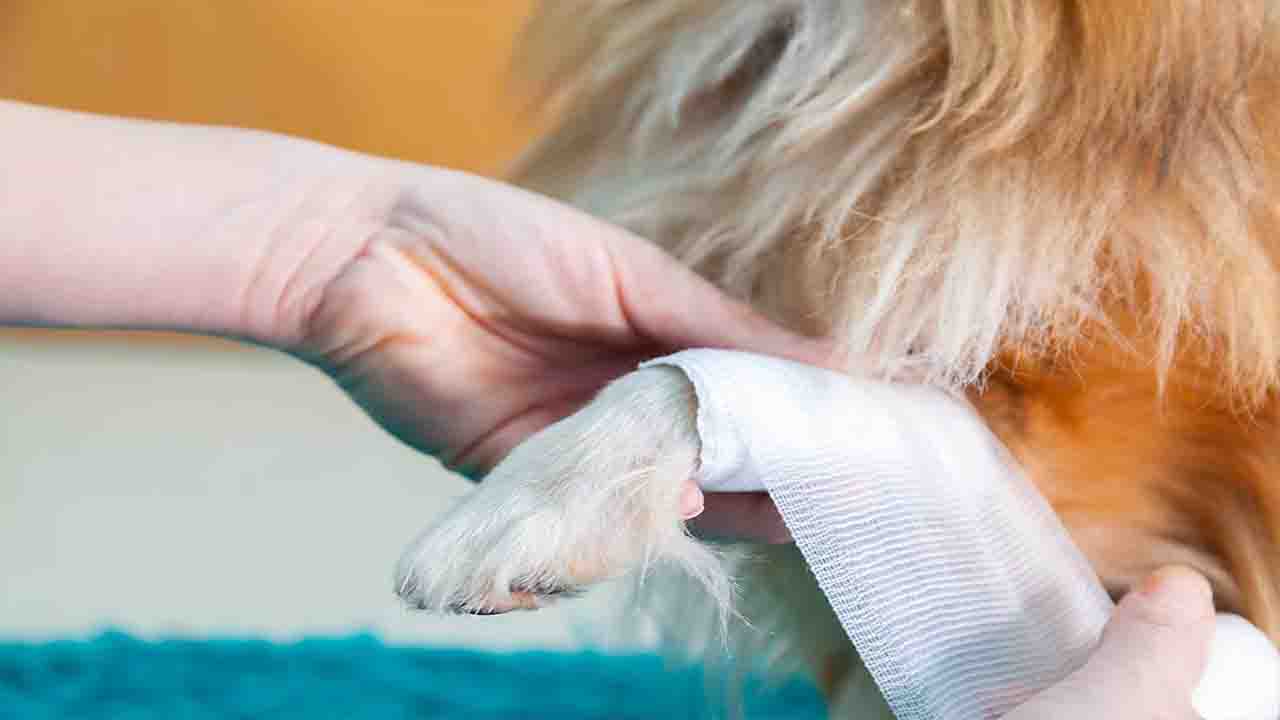
After a fight between dogs, it is important to assess any injuries that may have occurred. This should be done before attempting to reintroduce the dogs to ensure their safety. Check for visible wounds or signs of pain, such as limping or difficulty moving.
It may be necessary to seek veterinary care for more serious injuries. Even if there are no visible injuries, monitoring the dogs closely for signs of lingering aggression or fear is still important. It is always better to avoid caution when reintroducing dogs after a fight, as their safety and well-being should be the top priority.
3. Give Them Space
When reintroducing dogs after a fight, it is important to give them space. Dogs can become territorial and defensive following a fight, so providing them with separate areas to feel safe and calm is crucial. This will help prevent any further aggression or tension between the dogs. Gradually reintroduce them by allowing brief supervised interactions in neutral territory, such as a park or an open space.
Be sure to closely monitor their body language and behavior during these interactions and separate them immediately if any signs of aggression or tension arise. It may also be helpful to consult a professional dog trainer or behaviorist for guidance on reintroducing your dogs after a fight.
4. Gradual Reintroduction
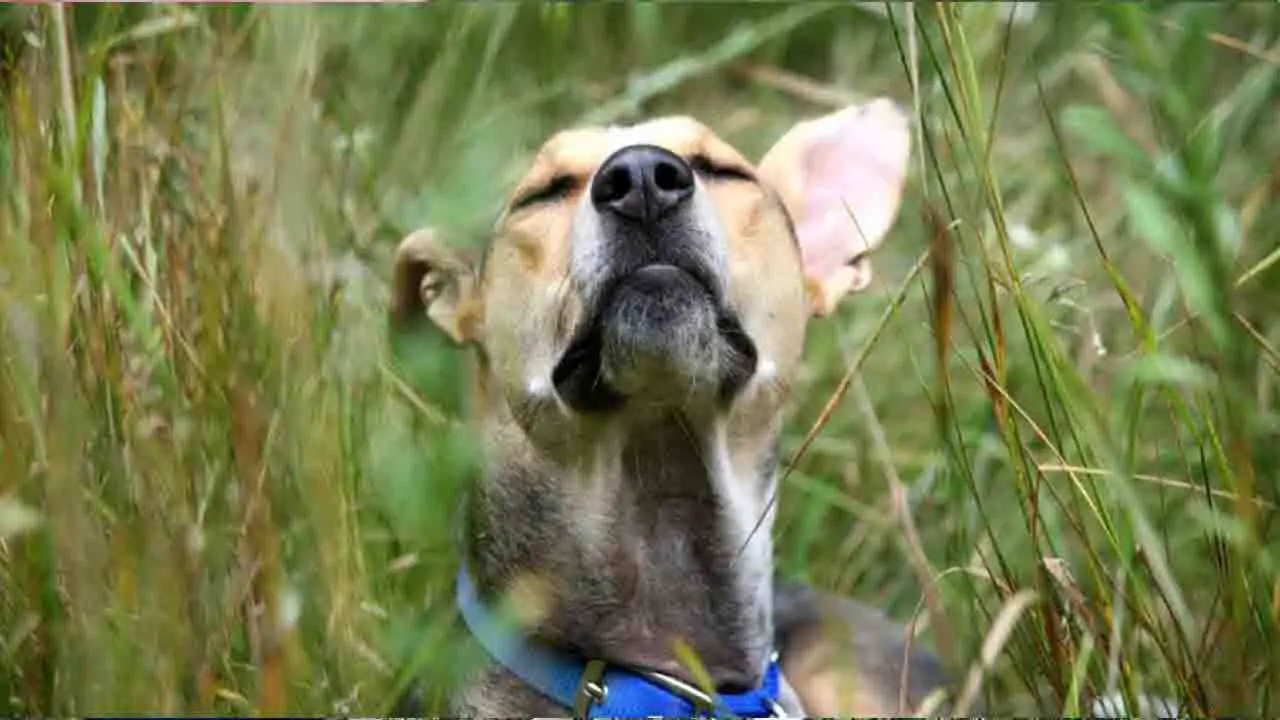
After a fight between dogs, it is important to proceed with caution when reintroducing them. A gradual reintroduction is recommended to ensure the safety and well-being of both dogs. Start by allowing the dogs to see and smell each other from a distance while keeping them securely separated. Over time, slowly decrease the distance between them, always monitoring their behavior closely for any signs of aggression or tension.
If, at any point during the reintroduction process, there are signs of aggression or discomfort, it may be necessary to seek professional help from a trainer or behaviorist. The key is to take things slow and prioritize the safety of both dogs throughout the reintroduction process.
5. Controlled Meetings
After a fight between dogs, it is important to reintroduce them in a controlled manner. This can help prevent further aggression and ensure the safety of both dogs. Start by keeping the dogs separated for a period of time to allow them to calm down and recover from the fight. When you are ready to reintroduce them, choose a neutral location where neither dog feels territorial. Use leashes or barriers to maintain control and prevent physical contact between the dogs.
Slowly allow them to approach each other, closely monitoring their body language for signs of tension or aggression. If at any point either dog shows signs of discomfort or aggression, separate them immediately and seek professional guidance. Gradually increase the duration and frequency of these controlled meetings as the dogs become more comfortable with each other.
6. Observe Body Language
When reintroducing dogs after a fight, it is crucial to observe their body language. Dogs communicate nonverbally, so paying close attention to their postures, facial expressions, and tail movements can provide valuable insight into their feelings. Look for signs of tension, such as stiff or lowered body posture, raised hackles, or a tucked tail.
These may indicate that the dogs are still uncomfortable around each other and should be kept separated longer. On the other hand, relaxed body postures, loose wagging tails, and play bows can be positive indicators that the dogs are ready to interact again. However, even if the initial body language appears positive, it is essential to closely monitor the interaction to ensure that both dogs are peaceful and safe.
7. Positive Reinforcement
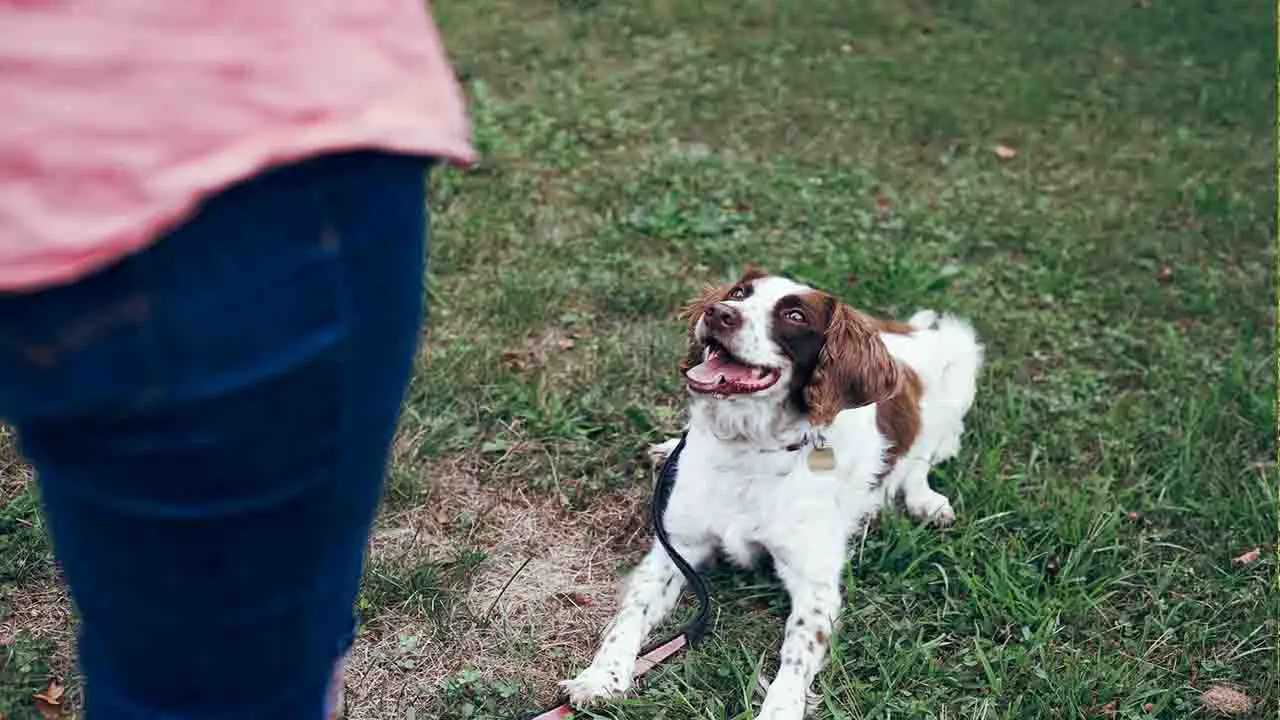
Positive reinforcement is a key strategy when reintroducing dogs after a fight. It is important to create positive associations between the dogs and their interactions with each other. This can be done by rewarding calm and friendly behavior with treats, praise, and attention.
Keeping the initial interactions short and supervised is also helpful, gradually increasing their time together as they become more comfortable. Consistency is key in reinforcing positive current behavior and avoiding negative or aggressive behavior reactions. Positive reinforcement techniques can help rebuild trust and create a safe and harmonious environment for your dogs.
8. Take It Slow
When reintroducing dogs after a fight, it is crucial to take things slow. Rushing the process can lead to further aggression and potentially dangerous situations. Start by keeping the dogs separated and gradually reintroduce them in controlled environments. Use positive reinforcement techniques like treats and praise to encourage calm and friendly behavior.
Keep interactions short and closely supervised at first, gradually increasing the duration as the dogs become more comfortable with each other. It is important to be patient and understanding behavior during interactions during this process, as it may take time for the dogs to rebuild trust and establish a positive relationship with each other again. Seeking guidance from a professional dog trainer or behaviorist can also be beneficial in ensuring a successful reintroduction.
Seeking Professional Help If Needed
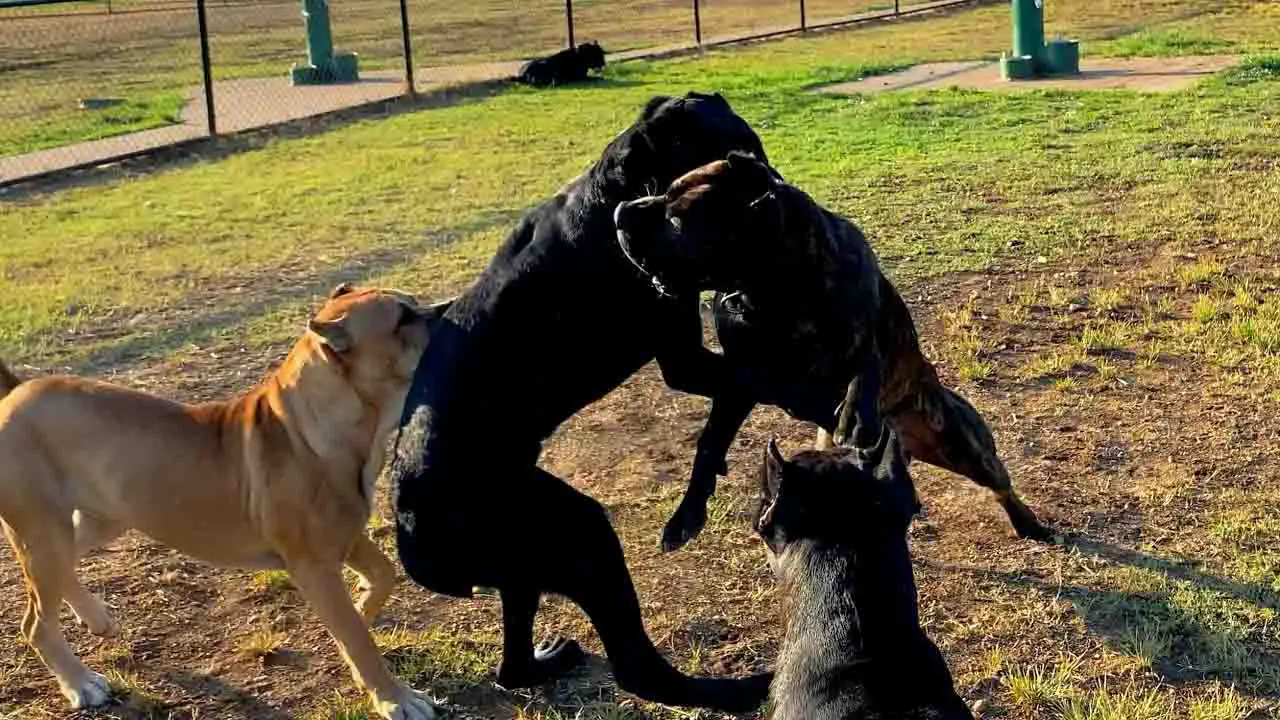
When reintroducing dogs after a fight, it is important to prioritize safety and take the necessary precautions. While some minor scuffles between dogs can be resolved with proper management and obedience crate training, more serious fights may require professional help.
If you are unsure about how to reintroduce your dogs safely or if the aggression continues despite your efforts, it is recommended to seek the assistance of a professional dog trainer or behaviorist. They have the knowledge and experience to assess the situation, identify underlying issues, and provide guidance on reintroducing the dogs in a controlled and safe manner. Remember, the well-being of both your dogs is paramount, so don’t hesitate to reach out for professional help if needed.
How Can You Prevent Future Fights?
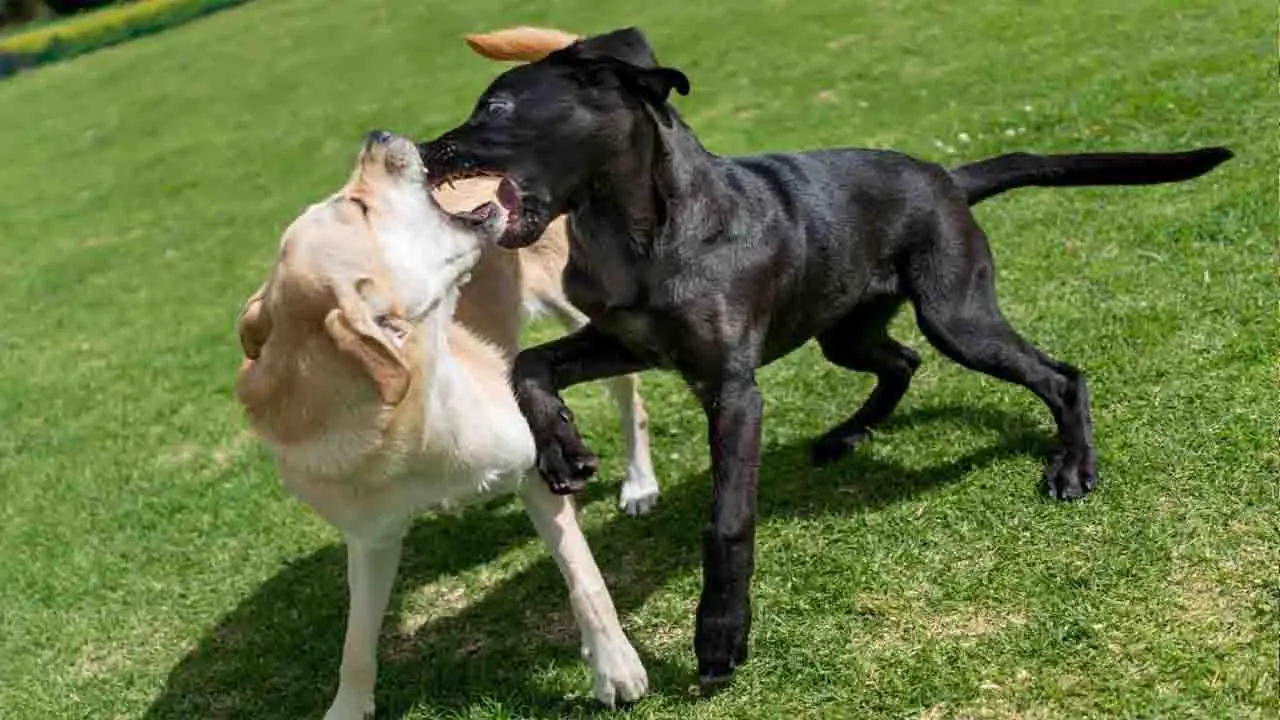
Preventing future dog fights is crucial for maintaining a peaceful coexistence and safe environment. Prevention is key when it comes to avoiding fights between dogs. Understanding their needs, providing structure, and addressing potential triggers can create a harmonious environment for your furry friends. Here are some tips to help you prevent future fights:
- Identify The Triggers: Take note of what triggers fights between your dogs. It could be toys, food bowls, territory, or certain behaviors. By identifying these triggers, you can take steps to avoid or manage them.
- Establish Clear Rules And Boundaries: Dogs thrive on structure and consistency. Set clear rules and boundaries for both dogs to follow. This includes rules around mealtime, playtime, and access to resources such as toys or beds.
- Provide Individual Attention: Ensure each dog receives individual attention and quality time with you. This helps prevent jealousy or competition for your attention.
- Gradual Reintroductions: If a fight occurs, gradually reintroduce the dogs in a controlled environment. Start with short supervised interactions and gradually increase the duration as they become more comfortable.
- Positive Reinforcement Training: Use positive reinforcement techniques to train your dogs and reinforce good behavior. Reward them for calm and friendly interactions with treats or praise.
- Keep An Eye On Body Language: Learn to read your dog’s body language to identify signs of tension or aggression in dogs before a fight occurs. This allows you to intervene early and redirect their focus.
The Do’s
- Proceed with a plan, and stay calm.
- Grab anything from the environment to create a barrier during the fight.
- Be it a pillow, trash can, cushion, chair, jacket, or anything.
- You can even use an Adapted collar from the back gently to separate.
- Ensure the dogs are getting in a state of calm. Consider it to be one of the most critical steps.
- Always take your pets to the vet after a fight. As a result, serious injuries can be identified within a short period, and quick medical help can be sought.
The Don’ts
- Don’t panic or yell, or it will intensify the chaotic situation.
- Don’t you dare to enter the fight physically, or you might get bitten.
- Never plan on beating your angry pet during the fight. Trust me, you will regret it.
- Don’t rush to separate the dogs by pulling. Acting like this might increase aggression.
- Don’t include any pack leadership, rank reduction protocols, or painful corrections to avoid the blue blood between the puppies.
Conclusion
A dog fight is joint, especially if you have two dogs. It would be best to be cautious when introducing your new pet to your old dog, as a fight could easily break out. If an unlikely battle occurs, you have to reunite them. So as a dog owner, you must know how to reintroducing dogs after a fight.
We have already discussed how to reintroduce dogs after a fight method here. So, please follow the steps while reintroducing dogs and care for them after being in a fight. Remember always to prioritize the safety of your pets above all else. With time, patience, and proper management, you can successfully reintroduce your dogs after a fight and foster a healthy and happy relationship between them.
FAQ
How Do I Reintroduce My Dog After A Fight?
When reintroducing your dog after a fight, start by keeping them separated for a period of time. Gradually reintroduce them in controlled, supervised situations to monitor their behavior and ensure their safety. Seek advice from a qualified professional dog trainer or behavior specialist for guidance.
Do Dogs Forgive Each Other After A Fight?
Yes, dogs can forgive each other after a fight. Dogs on leashes have the ability to move on from conflicts and reestablish their relationship. However, it is important for owners to monitor and manage their interactions to prevent further aggression or conflict.
Can Two Dogs Live Together After A Fight?
Yes, two dogs can live together after a fight, but it depends on the severity of the fight and the dogs' ability to reconcile. It is important to address any underlying resource-guarding issues, provide proper training sessions and supervision, and seek professional help.
Do Dogs Get Traumatized After A Fight?
Yes, dogs can experience trauma after a bad fight. They may exhibit signs of fear, anxiety, or aggression. It is important to provide them with appropriate care and support and possibly seek professional help to address any behavioral changes or emotional distress they may be experiencing.
Should I Punish My Dog After A Fight?
No, punishing your dog after a fight is not recommended. Punishment may increase fear and aggression, making the situation worse. Instead, focus on preventing fights through training, social animals, and managing their environment. Seek guidance from a professional dog trainer or behaviorist for help in addressing aggression issues.

